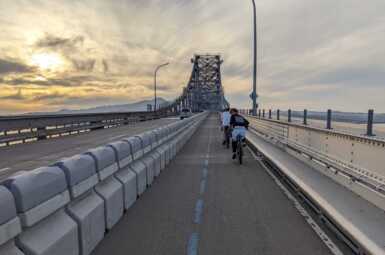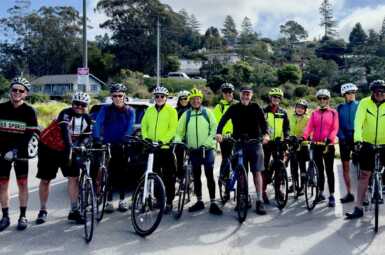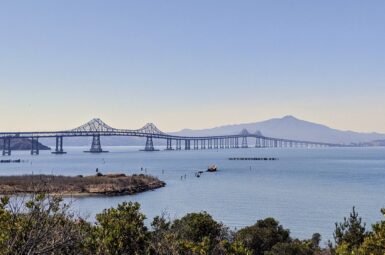November 2022 Election 2022 San Anselmo Town Council Candidate Questionnaire
As a 501(c)3 nonprofit organization, Marin County Bicycle Coalition cannot endorse candidates for public office, but we are able to share information so that you can arrive at your own conclusion. Below are the 2022 Town of San Anselmo candidates’ responses to our questionnaire on bicycling in Marin. We have made no content changes. Thanks to the candidates for their time and thoughtful answers.
Candidates’ campaign websites may be accessed by clicking on those with a highlighted name. Those who did not provide a campaign website are not highlighted.
Here are the candidates on the November ballot for the Town of San Anselmo:
-
Guy Meyer
NOTE: Tarrell Kullaway currently serves as the Executive Director of MCBC. She was not involved in the development of this questionnaire and was given the same notice and deadlines for its completion as the rest of the candidates for office in San Anselmo.
Personal Travel
1. Do you ride a bicycle? If so, for what purposes and how often? (transportation/road/mtb)
Steve Burdo:
-
a. Commuting: I used to bike to work primarily when I worked in San Rafael. Since I took a job with Contra Costa County in Nov. of 2015, I only bike/pub transit to work a few times/yr. (My office is in Martinez)
-
b. Errands:1/2 days/wk
-
c. Road recreational:Occasionally
-
d. Mountain biking or trails:Never (I have a knee injury that makes mountain biking difficult these days)
Ford Greene:
Yes. I ride my bike daily, practically for errand and for fitness and spiritual renewal.,
-
a. Commuting: live and work at same location
-
b. Errands: daily
-
c. Road recreational: not since 2016 when lower back pain stopped me
-
d. Mountain biking or trails: yes, at least 4 days per week
Tarrell Kullaway:
-
a. Commuting: all trips under 4 miles
-
b. Errands: all trips under 4 miles – 4+ days/week
-
c. Road recreational: 2-3 days/week
-
d. Mountain biking or trails: 2-3 days/week
Guy Meyer:
-
a. Commuting:
-
b. Errands:
-
c. Road recreational:
-
d. Mountain biking or trails:
I currently walk or take public transportation. My last bicycle was stolen about two years ago. This had been the second stolen bicycle in 5 years and I felt somewhat responsible for the loss of both of these fine vehicles. I likely will own a bicycle again. I do not own a car. I walk to work and to shop. Sometimes I take the bus into San Rafael to shop for errands or pleasures. I have traveled cross country via Amtrak many times as well as to Southern California and north to Oregon. I am not a fan of Jet travel and question whether we fully understand the impact on the Environment of High Altitude Carbon Emissions.
2. If you own a bike, what type of bike(s) do you have and ride? If not, when was the last time you rode a bike, and where (on vacation, for example)?
Steve Burdo:
I own a City Bike that I bought at a yard sale in Terra Linda in 2009. At the time, I did not have need for a car because my office was in San Rafael and I was using bike as my primary form of transit (as I had since I moved to Marin in 2006). The bike has stayed with me through the years and is now used for errands or rides around town.
Ford Greene:
Ibis Ripley carbon mountain bike: since April 2018: I have over 10,000 mountain miles on it.
Trek Fuel mountain bike
Colnago C-40 carbon Road Bike
Tarrell Kullaway:
I have ALL the bikes – every kind – all made by my late husband except my e-cargo bike which is a Benno Boost.
Guy Meyer:
My last two bikes were a Trek and a Schwinn. I rode them everywhere for everything, commute, errands.
Vision
3. In your own words, describe your vision for the future of transportation in San Anselmo.
Steve Burdo:
-
Less cars, with a greater percentage of electric vehicles and infrastructure to support them.
-
Better public transit options that make it easier for people to transition from cars to a more bike/ped and public transit oriented commuter plan.
-
More bike lanes coupled with the necessary protections that make it safer for people to bike in our town and region.
-
A more walkable and bikable downtown.
-
Thoughtful traffic planning at the hub that places a better emphasis on bike and pedestrian traffic and safety.
Ford Greene:
As building residences continues, traffic will increase. As traffic gets worse, people will be more inclined to use both analogue and e-bikes as a matter of both efficiency and convenience. In San Anselmo, we have bicycle routes which will continue to guide usage. To think that San Anselmo Avenue will be blocked off to cars is neither practical nor realistic. It will continue to be shared.
The east-west improvements in San Rafael on the west end of Second Street will greatly improve the lack of good east/west bikeways running from Fairfax/San Anselmo along Greenfield to San Rafael and the Transit Center.
Tarrell Kullaway:
I have a vision that everyone who is capable of riding a bike rides everywhere, every day for fun and to get around. I’d like bikes to be the first thing most people think of when they leave their house to run an errand. Not everyone can ride or walk easily, but those who can should be able to ride or walk without concern for their safety. I envision a San Anselmo where parents have zero worries about the safety of their children walking to the park, a place where older adults are able to stay active and healthy well into their late years by walking and riding on streets and trails that are 100% safe.
Guy Meyer:
My vision for the future of transportation in San Anselmo is a world of pedestrians, bicyclists, & public transportation, with more and more people finding life simpler using cars less or even a lifestyle car-free.
Traffic
A large proportion of peak hour traffic is made of people driving their children to school. While some people live too far to easily walk or bike to school, many parents are simply afraid to let their children travel by foot or by bicycle because of the high volume and speeds of car traffic.
4. What strategies would make more parents feel safe with their children walking or biking to school, thereby reducing traffic and making everyone else’s trip to school a little safer?
Steve Burdo:
With respect to San Anselmo, I would first point to the great work that’s been done around Brookside, Hidden Valley, and Wade Thomas through the Safe Routes to School Program. Additionally, I think our current council has done a good job of prioritizing bike/ped interests by forming the first-ever town Bicycle and Pedestrian Advisory Committee.
I live right next to Archie Williams High School and see countless kids each week biking and walking right next to speeding cars on SFD Blvd during peak commute hours with zero protection. Bike/ped safety is a big concern for many, particularly parents, and something I have been proud.
To make people feel more safe I would recommend the following:
-
Increased enforcement of speed limit during peak commute hours.
-
Reduce the speed limit on SFD and other town roads where needed.
-
Increase bike lane access and safety on main thoroughfares and improve road/sidewalk/bike lane conditions on routes that are designated by Safe Routes to School.
-
Increase signage and public information about recommended bike routes for bicyclists and pedestrians.
Ford Greene:
As a child from the First or Second Grade on, I rode my bike or walked a mile and half each way every day from our home in Winship Park to Ross School. Now, an effective response would be to organize kids into commuting groups that are chaperoned by one or more adults gleaned from the families of children who are riding their bikes or walking. Parents would feel safer knowing that their children are part of a group of kids and that group of kids is protected by an interested parent on a bike. Like developing any other good habit, the hardest part is starting the habit and gaining momentum. Bike riding is fun and efficient. People just need to start.
Tarrell Kullaway:
-
Bike/Ped infrastructure that physically separates cars from people who walk and bike.
-
Slow cars through speed calming practices such as speed cameras
-
In 2024, a new state policy will enable us to lower speed limits. Studies show that lowering speed limits to 20MPH in school zones SAVES LIVES. I will ask town staff to review areas where speed limits can be reduced and push to implement 20MPH in school zones. I will then push for the money raised through speeding tickets in those areas to go to Safe Routes to Schools programming – on bike safety education in the schools.
Guy Meyer:
When I was in grammar school we had a ‘Safety Patrol’ . The older kids (6th graders) were proud to wear an over-the-shoulder belt that had a little medal on it. We had assigned routes that met every morning and again at the end of the day. We walked the equivalent of approximately 4 or 5 city blocks bringing our various ‘flocks’ to school and home again. In this way, perhaps older children and/or even parents could supervise walking, walking bicycles or riding bikes to school a little safer.
A survey from the Transportation Authority of Marin (Figure 18, p. 51) found that over half of Marinites would like to bike more than they currently do. This backs up research that shows that over 50% of adults are interested in biking, but concerned about the threat of fast-moving cars.
5. What concrete steps can be taken to allay these concerns and make people feel safe on bicycles?
Steve Burdo:
Similar to my above answer:
To make people feel more safe I would recommend the following:
-
Increased enforcement of speed limit during peak commute hours.
-
Reduce the speed limit on SFD and other town roads where needed.
-
Increase bike lane access and safety on main thoroughfares and improve road/sidewalk/bike lane conditions on routes that are designated by Safe Routes to School.
-
Increase signage and public information about recommended bike routes for bicyclists and pedestrians.
-
Cultivate a more accepting culture of bicycle and pedestrian transportation.
Ford Greene:
The biggest threat from moving cars is generated by people who have their noses in their phones. A public education program utilizing public banners in conjunction with stepped up police enforcement would help this. In addition, to the maximum extent possible, separating intense auto usage by means of bike lanes would help, e.g., a bike lane along Center between Fairfax and San Anselmo; there is enough room on the shoulder to do this. Also, a public education program helping drivers know how to manage driving in proximity to cyclists would help. Many drivers do not know how to safely pass cyclists and therefore do not pass and instead of passing become frustrated. Public education directed at cyclists not to ride side by side in high traffic areas, and to stay to the right when cars are around would help, too.
I would also continue to advocate for “Idaho Stop” rules. Idaho’s rule is pretty straightforward. If a cyclist approaches a stop sign, he or she needs to slow down and look for traffic. If there’s already a pedestrian, car, or another bike there, then the other vehicle has the right of way. If there’s no traffic, however, the cyclist can slowly proceed. Basically, for bikers, a stop sign is a yield sign. If a cyclist approaches a red light, meanwhile, he or she needs to stop fully. Again, if there’s any oncoming traffic or a pedestrian, it has the right of way. If there’s not, the cyclist can proceed cautiously through the intersection. Put simply, red light is a stop sign
Tarrell Kullaway:
-
Physically separate cars from bikes
-
Lower speed limits
Guy Meyer:
The threat of fast moving cars is very real, particularly with drivers who lack good precautionary skills. They often do not see anything except what is right in front of them and even then they can be distracted. Bicyclists also need to realize that they are fast moving vehicles and their actions can represent a threat to pedestrians and others. I would like to see San Anselmo take a more active role in preventing commuters from using local streets to bypass the Hub Intersection.
Safety
Traffic deaths and injuries are on the rise, both nationally and in Marin (this includes all road users, not just bicyclists). Many cities in California have enacted so-called Vision Zero
resolutions, setting an explicit goal to eliminate traffic deaths.
6. If elected to town Council, will you support such a resolution? If so, what actions do you see as being needed to improve safety? What are the relative roles of infrastructure, enforcement, and education?
Steve Burdo:
I would absolutely support that resolution. As the current Vice-Mayor of San Anselmo, I’d be happy to sponsor the resolution.
Ford Greene:
Yes. Measures set forth in my response to Question 5.
Personal Experience: In 2001, the day before the Terrible Two in Sonoma County that I was registered to ride, while descending White’s Hill into Fairfax on my road bike I was been hit by a car that tried to pass and then corrected into me and spent five days in Marin General’s Intensive Care Unit as a result. As an endurance rider on the road, I have experienced drivers playing “chicken” with me, throwing full cans of soda and rocks at me and pepper spraying me.
Infrastructure: Better separation of cars and bikes in high density areas; better demarked and more bike lanes.
Enforcement: More tickets for people who drive distractedly and/or with their noses in their phones instead of keeping their eyes on the road. Idaho Stop rules for bikes.
Education: as to cars, how to drive when in proximity of cyclists. As to bikes, how to ride when in proximity of cars.
Tarrell Kullaway:
Absolutely.
Infrastructure: lower speed limits and physical separation
Enforcement: focus on cars speeding
Education: Increased funding to the Safe Routes to Schools program
Guy Meyer:
I do not have enough information on what Vision Zero actually proposes. Though I have found the website I would need more information as to what proposals are on the table. As mentioned I would like to see San Anselmo take a more active role in preventing commuters from using local streets to bypass the Hub Intersection. I actively advocate that we build an ethic of working where you live and or Public Transportation commutes. Perhaps with tax credits.I propose we halt mandated density and prepare for and build a more Green Peaceful community. I advocate the people of San Anselmo embrace a SloMo ethic and see how much fun that could be if we began dedicating some days for that if not every Sunday
Climate Change
The latest IPCC report states clearly that greenhouse gas emissions need to be reduced quickly in order to stave off the worst effects of climate change. According to San Anselmo’s most recent Greenhouse Gas Inventory, transportation accounts for a majority (53%) of local greenhouse gas emissions. Given that battery electric cars make up 3% of California’s vehicle fleet, and only 12% of new cars sold.
7. does reducing overall driving have a role in meeting our climate targets? If so, what policies can support transit, walking, and bicycling in place of driving for short trips?
Steve Burdo:
I believe it does. And while the percentage of battery electric vehicles in San Anselmo is likely higher than the state average, the point remains – one of the best ways San Anselmo can achieve and/or exceed our climate targets is to reduce vehicle miles traveled.
I believe the best policies for doing so are remote work policies. These policies became much more acceptable and widespread due to the COVID-19 pandemic. As someone who benefited from such policies, my weekly vehicle miles traveled in my Ford Escape Hybrid dropped by 75%. I was proud to support the Town’s remote work policy during the pandemic and support making the program a permanent fixture.
Beyond remote work, two other policies that would work towards that goal in San Anselmo would be 1) creating better public transit options, and 2) creating better and safer bike/pedestrian access on main roads and transfer routes.
Ford Greene:
Yes. Reducing driving gasoline-powered cars is imperative. One policy is making it easier to possess, drive and charge electric cars. More public charging stations.
Policies that make biking and walking safer and easier will help. Also, public education programs that show how biking is faster, leads to better physical fitness and is more fun than driving cars will help move public attention toward being more open to riding and walking for short trips.
Tarrell Kullaway:
Yes. E-cars help, but they contribute to toxic runoff in our precious watershed. They are also very resource-heavy to produce. Walking, biking and transit need to be a part of the solution.
We will need to get to a place where people don’t automatically reach for their car keys. As more and more people experience the joys of getting around by bike, more are taking up the cause. I, myself, have committed to taking all trips 4 miles or less by bike or foot. Not everyone is physically able to do this, but those who are can really make an impact.
Guy Meyer:
Yes indeed. Reducing overall driving not only helps create a safer environment for bicyclists and pedestrians but it is ‘the low hanging fruit’ as some have described the process of doing what you are able. If everyone attempted to designate once a week car-free day then you have something very tangible. The biggest policy I will stand for is believing that the people have the power. That when asked the people will respond. When the people respond willingly we begin to turn the world around.. on to a sustainable track.
Project Delivery
Bicycle/pedestrian plan implementation is notoriously slow with typically fewer than one new bike lane project opening every year.
8. What steps would you take to hasten the project delivery process from inception to ribbon-cutting?
Steve Burdo:
1) At the outset – Meet with the town manager, pubic works director and other relevant staff and stakeholders to agree upon the plan and timeline.
2) Throughout – Work with staff and stakeholders to ensure the plan remains on track and do everything I can on the council to expedite the process.
This is the simple process I followed in my efforts to make the needed improvements to Memorial Park happen. In April of 2019, I brought together both supporters and opponents of Measure M, the 2019 San Anselmo ballot measure to improve Memorial Park. Working together, we came up with a plan and a three year timeline to make improvements to the playground, skate park, drainage and irrigation system, playing fields and the walk/bike path around the park. As we are approaching the three year mark, the final piece of the project – the replacement of the fields, drainage and irrigation system – recently began on Sept. 6th and will be finished in November, right on schedule.
Ford Greene:
The recent 100-plus degree multiday heat wave should help people recognize the consequences of the continued failure to reduce GHG fast enough. Project speed can be built into the legislation adopted at the Town Council level by requiring performance benchmarks on a timeline to be included in the contract for construction.
Tarrell Kullaway:
Absolutely everything I can.
Guy Meyer:
I urge all bicyclists to join in the relaxed culture of San Anselmo. San Anselmo is an idyllic town in many ways and as a bicyclist for many years there is hardly an area I can imagine that is as Bicycle friendly as San Anselmo and the Ross Valley. Any Bike lanes through San Anselmo neighborhood Streets should be an item that clearly benefited all. Our own local activities will gradually deliver an awesome Green future, wherein new asphalt need not be added but can be gradually removed.
In all things, there is a tension between “perfect but slow” and “quick and good enough.” Recent years have seen a move toward so-called “quick-build” infrastructure, allowing reconfiguration of streets to facilitate safer walking/biking without a years-long engineering process. While quick-build projects may be less aesthetically pleasing than the standard process, they are cheaper and happen much faster.
9. How do you rank aesthetic concerns of biking/waking infrastructure in comparison to those of cost and project speed?
Steve Burdo:
As someone who works in the area of public safety, I always believe in safety first and care much less about aesthetics. I also like to get things done, so I’m naturally supportive of quick build projects.
Ford Greene:
At this point getting the project implemented quickly has a higher priority than making it aesthetically pleasing.
Tarrell Kullaway:
We need to get projects on the ground as fast as possible so people can experience the joys of safe cycling and walking. Studies show that once these projects are implemented, they almost always become cherished and the public fights for them to be made permanent.
Guy Meyer:
I believe all projects should be judged on how they impact local neighborhoods, with the goal for every community to work on an annual reduction of Carbon Emissions. I think we have to proceed very carefully at imposing biking infrastructure. ‘Project speed’ seems to me to be a questionable motivation, prone to outcomes not foreseen, and too much like the way the world is currently run. (not particularly for the benefit of all Life)
Car Parking
Much of Marin has narrow streets, but on-street parking typically takes up between 30-40% of the street space between the curbs, and is often in tension with the need for dedicated bike lanes.
10. In your mind, are bike lanes ever sufficiently important to justify removing on-street parking, and in what circumstances would you consider that to be the case?
Steve Burdo:
I believe they are, depending on the road and traffic flow (including bike/ped). One circumstance that comes to mind is where parking is creating an impediment to dedicated bike routes where a bike lane would make conditions safer.
Ford Greene:
Yes. When there is a street of high bike use, a bike lane may preempt parking that impedes the flow of bike transportation.
Tarrell Kullaway:
In most cases.
All studies show that the only way to change behavior away from driving is to incentivize not driving by making it the cheaper option. Free parking is shown again and again to prevent
people from walking or biking.
Guy Meyer:
Re: Narrow Streets and Bike Lanes. I believe we can change our world by peacefully adapting, changing our own behaviour might change the world. I would have to see an example, I don’t know if narrow back streets need ‘Bike Lanes’.
11. Would you say that San Anselmo has (A) not enough, (B) too much, or (C) just enough space dedicated to parking cars? If (A), what areas of town would you consider to convert to parking, and if (B) what would you do with the space that was previously parking?
Steve Burdo:
Based on the town’s recent parking study, our data regarding traffic patters and vehicle ownership, and the implementation of a permanent parklet program downtown, I would say San Anselmo is currently in the category of C) Just enough. Ultimately, our goal will be to get to “too much” because less people are driving.
Ford Greene:
Not enough parking both in the hills and in the flats. As to downtown parking, both the Pine Street and Magnolia Lots would lend themselves to stacked parking. Stacked parking could be implemented by a public-private partnership. This would be a method that would help balance the elimination of retail parking spaces that parklets drive.
Tarrell Kullaway:
B)
-
bike parking – 12 customers who bike can fit in a spot where only one car fits.
-
Protected bike lanes
-
Parklets
-
Places to dance and run and play (such as open streets downtown on Friday/Saturday evenings)
-
Affordable housing close to services where people can walk or bike to get groceries, healthcare and other services.
Guy Meyer:
C – just enough parking. Particularly as we all learn to leave our vehicles at home more often and enjoy walking downtown or riding our bicycles there. I would like to see still more Bike racks. I would like to See Parking spaces given up / dedicated to an annual tree planting always with an accompanying Bicycle Rack. There are a few areas of San Anselmo where parking spaces would not be missed 5 or 6 bicycles can park in a Parking Space with a big old tree too.
Bike Parking
Many MCBC members report challenges with bicycle parking in the downtown area. Racks are few and far between, or not easily visible from shops and areas with high levels of foot
traffic.
12. What steps or policies would you advance on the council agenda to bring about better bicycle parking and reduce the chance of bicycle theft?
Steve Burdo:
If you’ve worked with our town staff, you would find this is a pretty easy ask. So long as there is demand, our staff and Council are very open to adding bike parking and have included bike parking in all of our recent infrastructure projects where there is a need (ie. Creek Park, memorial Skate Park, etc.).
Ford Greene:
I have had three expensive bikes stolen from me over the years. My quick response or quick police repose has resulted in two of these bikes being recovered. Bike racks are inexpensive and easily installed. I support the installation of more bike racks. Good enough locks are the responsibility of the bike rider.
Tarrell Kullaway:
-
Investments in bike parking
-
Policies that require secure bike parking in new multi-family housing units
Guy Meyer:
I would like to see any Parking Lot over, let’s say for starters, 12 spaces dedicate one to bicycles.
Due to recent changes in state law, the cities and towns of Marin are being compelled to zone for more multi-family housing. However, traffic is already unsustainable. To address this, many cities have implemented what is known as Transportation Demand Management (TDM) in new developments, including replacing some car parking with bicycle parking, giving residents transit passes, or providing shared cars.
13. Do you support steps to require secure bike parking in new housing (and other policies to reduce driving), and, if so, how would you seek to implement them?
Steve Burdo:
I do. The best way to implement such a policy would be to work through the Town Planning Commission and the Town Council to build consensus around adding such a requirement to the building code.
Ford Greene:
Yes. I would include secure bike parking as a requirement in the planning approval process.
Tarrell Kullaway:
Yes. There need to be incentives for developers to include secure bike parking in new units and towns need to reduce or remove Mandatory Parking Requirements.
Guy Meyer:
I strongly oppose the Mandated Housing policies of Sacramento which are counter to all practical Environmental considerations as well as fail to address Homelessness or Affordable Housing. In California we are reminded every day of Water, Fire, Traffic Gridlock, Carbon Emissions and our own fragile Quality of Life. Being compelled to follow this plan is to undermine Ecology and Democracy. It needs to be opposed at every practical step. Secure Bike racks are welcome additions in our community.
San Anselmo-Specific Question
Thanks to new state law, commercial streets like San Anselmo Avenue are eligible for lowered speed limits, which would reduce the likelihood and severity of crashes.
14. Do you support lowering the speed limit to 20 mph on busy commercial streets like this? Why or why not?
Steve Burdo:
I am in favor of lowering the speed limit on busy commercial streets. Whether 25 or 20, or some other limit, my main concern is on SFD Blvd during commute hours when kids are going to, or coming from, school. However, the speed limit during those hours is 25 and people violate it all the time. No matter what the speed limit, the key is enforcement.
Ford Greene:
Yes. 20 mph is what is currently practical, if that fast. In the past I have unsuccessfully advocated and voted to reduce the speed limit on Sir Francis Drake Boulevard
Tarrell Kullaway:
Yes.It will save lives.
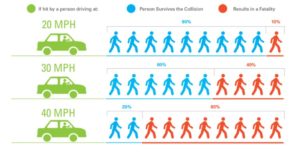
Guy Meyer:
I would have to look at it on a case by case basis. Big Trucks may need to be banned from Downtown. 20 mph seems like a logical speed limit throughout downtown San Anselmo.
Wrap Up
15. Why should people who ride bikes (or those who want to ride bikes but don’t yet) vote for you?
Steve Burdo:
Thank you for the opportunity to share my thoughts and ideas with you. I bring over a decade of service to San Anselmo and currently serve on the Town Council as Vice-Mayor. Previously, I served on the San Anselmo Parks and Recreation Commission from 2012-2019, in addition to numerous other town committees and commissions.
During my first three years on the Council, I’m proud of the important work we accomplished during an unprecedented pandemic, which began shortly after my fifth council meeting. Despite the impacts COVID brought to our community, because of a practical, forward-thinking approach, San Anselmo not only survived, we thrived. We have now become one of the most vibrant places in Marin County, a destination Town that people are coming from all over to live, work and/or play.
I’ve listed below some of the issues I am most proud to have been involved in during my first three years on the Council that have helped to improve our Town:
• Proving sound stewardship that allowed San Anselmo to not only deal with the early and ongoing stages of COVID-19, but to emerge as a leader in Marin County for addressing the most pressing economic and human impacts of the pandemic.
• Advocating for, and voting in favor of, efforts to create outdoor opportunities such as our parklet program and “On the Avenue” concert series.
• Leading the efforts to (finally) upgrade the Memorial Park surface fields and walkway, which includes the installation of water conservation infrastructure that will reduce water use at the park by 50%.
• Supporting the Creek Park renovation plans and opening of Creek Park, which has helped revitalize our Town.
• Fighting hate and promoting inclusion in our community by leading the efforts to create San Anselmo’s new Racial Equity Committee and organizing our Town’s demonstration last year in the wake of unthinkable acts of racism and anti-semitism in our Town.
• Continuing San Anselmo’s proud tradition of leading the way on addressing climate change by advocating, and voting for, some of the strongest environmental policies in Marin, including a ban on gas powered leaf blowers and other gas powered lawn equipment, a policy that requires building electrification for new developments, policies to allow for more electronic vehicle charging stations and prohibiting the development of additional gas stations, and policies that have significantly reduced our Town’s water usage.
• Leading the efforts on the Ross Valley Fire Board to ensure fire operations for the Ross Valley Fire Department in the wake of the Town of Ross’s closure of Station 18, as well as helping to ensure San Anselmo’s wildfire resiliency as the Town’s representative on the Marin Wildfire Prevention Authority.
I would be honored to have your vote.
Steve
Ford Greene:
I live and work at ground zero, that is, on Sir Francis Drake right off The Hub in San Anselmo, which processes about 60,000 car per day. I am in a position to observe local driving habits. I have ridden town, road, and mountain bikes both locally to do errands/commute, on endurance rides of 200 miles or more in a day and mountain biking on Mount Tamalpais for almost 40 years. I have substantial personal experience both as a rider and as a car driver around bikes. I understand the issues from both sides of the equation. I am practical inasmuch as I recognize that automobiles in Marin County will not suddenly disappear, and that car drivers and bike riders must co-exist. I will work to accommodate the interests of both with an edge to pushing for conditions more favorable to bike riding as it is both the more sustainable and best practice and a generally less well-established mode of transportation.
Tarrell Kullaway:
Because I’ve dedicated my career to bicycle advocacy as a solution to our climate emergency
Guy Meyer:
People who ride bikes might well vote for me if they are also passionate about bringing about an authentic change in our local culture. Let’s celebrate the Slow and creatively engage with each other to find the ways to beautify and protect our local California. History is made here, bring about Green living in a real and sustainable way. Let’s go!
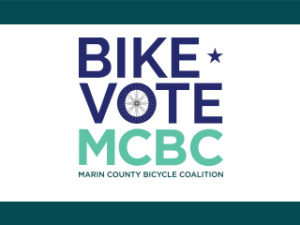
members make it happen!
We’re fighting for a more bike-friendly future in Marin. Are you with us? Join Marin County Bicycle Coalition today.
